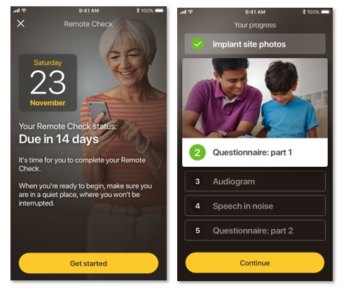One of Cochlear’s service commitments is to provide efficient & effective support to individuals when seeking coverage of our implantable hearing systems, replacement processors, upgrades, or parts, and accessories. That commitment extends to obtaining the necessary authorizations for those systems and services from the health plans or insurance companies on the individual’s behalf through the submission of a Letter of Medical Necessity (LMN or LOMN).
Within the LMN, the individual’s diagnosis code is referenced. As you know, the diagnosis code supports the medical necessity for the service or tells the health plan why the service was performed. When diagnosis codes are recorded accurately from the outset, patients, providers, and health plans all benefit.
There is a link between an unspecific or vague diagnosis code and a denial from a health plan for lack of medical necessity. A denial for that reason may be appealed certainly, yet may have been preventable by ensuring the diagnosis code is coded to the highest level of specificity and follows health plans’ policies.
Medicare’s National Coverage Determination for Cochlear Implantation, for example, covers “bilateral pre- or post-linguistic, sensorineural, moderate-to-profound hearing loss.” Practitioners selecting code H90.5 (unspecified sensorineural hearing loss) to describe the impairment would not meet the requirements for medical necessity under Medicare’s coverage policy, subjecting the claim to denial or post-payment audit and recoupment. Bilateral sensorineural hearing loss is more accurately described as H90.3 (sensorineural hearing loss, bilateral).
A second example is single-sided deafness, a hearing loss for which the Cochlear™ Baha® System may be a solution. With little or no hearing in one ear, and unrestricted hearing in the other ear, practitioners using diagnosis code H90.4 (sensorineural hearing loss, unilateral with unrestricted hearing on the contralateral side) could be more specific by considering H90.41 or H90.42 sensorineural hearing loss, unilateral, right or left ear, respectively, with unrestricted hearing on the contralateral side.
To be sure, coding to the highest level of specificity is a great habit to form. The practice may reduce the number of denials encountered and facilitate individuals obtaining the necessary insurance approval for implantable hearing solutions.









